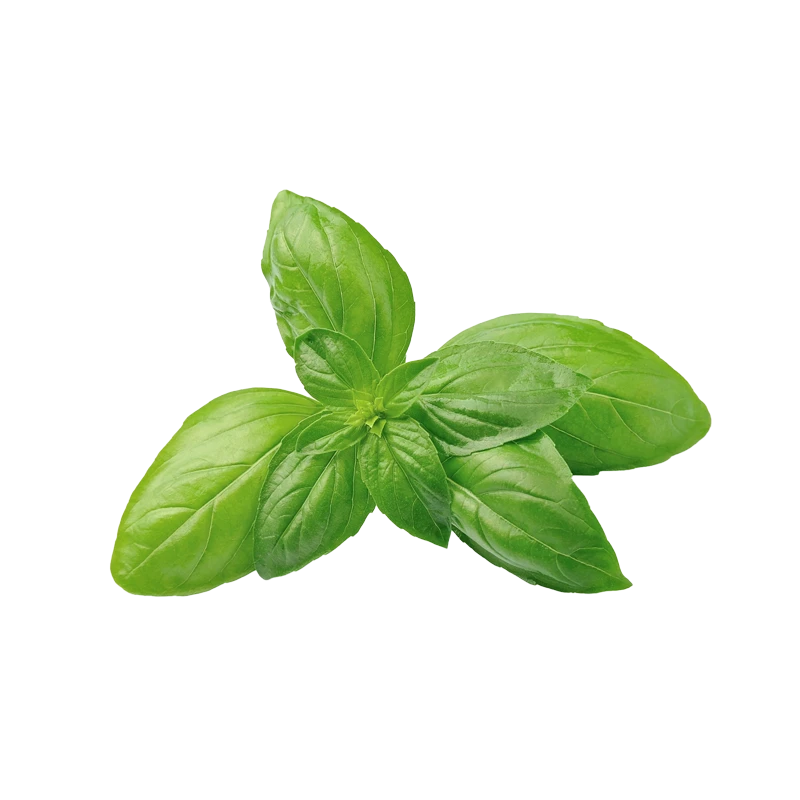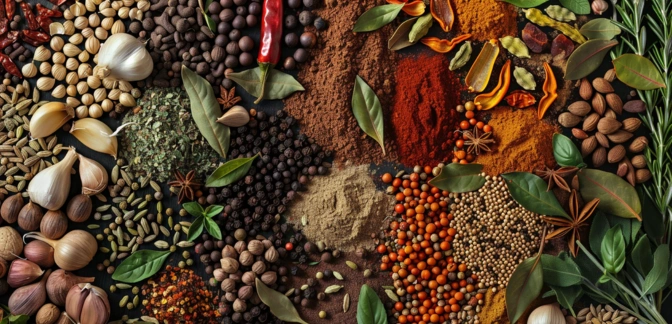Basil — Nutrients, Health Benefits, And Shopping Tips

Written by Listonic Team
Last update on September 4, 2024
Nutrients
Nutrition facts
Amount per 100 g
Calories
🔥 23 kcal
| Nutrition per: 100 g | Value | % Daily Value* |
|---|---|---|
| Carbs | 3 g | 1.09% |
| Fiber | 2 g | 7.14% |
| Sugars | 0 g | - |
| Glycemic Index | 5 | - |
| Protein | 3 g | 6% |
| Sodium | 4 mg | 0.17% |
| Total Fat | 1 g | 1.28% |
*The % of Daily Value (DV) tells you how much a nutrient in a serving of food contributes to a daily diet. 2,000 calories a day is used for general nutrition advice.
23
🍏 Low-Calorie Foods
5
🟢 Low Glycemic Index
Key takeaways
Health benefits
- Rich in antioxidants, such as flavonoids and essential oils, which help protect the body from free radicals and reduce inflammation.
- Supports digestive health by promoting healthy digestion and reducing symptoms of bloating and indigestion.
- Contains antimicrobial properties, which can help fight off infections and improve overall health.
- Provides essential vitamins and minerals such as Vitamin K, Vitamin A, Vitamin C, calcium, and iron, which are important for overall health and well-being.
Health risks
- Possible allergic reactions in some individuals, causing symptoms such as itching, swelling, or difficulty breathing.
- Potential contamination with harmful bacteria such as E. coli or Salmonella, particularly in fresh basil that is not properly washed or stored.
- High intake of certain compounds like estragole in basil, which has raised concerns about potential carcinogenic effects with excessive consumption.
- Interaction with blood-thinning medications due to the presence of vitamin K in basil, which can affect blood clotting.
How to choose basil
When choosing fresh basil, look for vibrant green leaves that are perky and aromatic, a sign of freshness and essential oils which are crucial for flavor. The stems should be firm and the leaves free from dark spots or wilting.
Steer clear of basil with yellowing leaves or a wilted appearance, as these indicate age or improper storage. Also avoid basil that has a mildewed smell or any signs of rot, which greatly diminish its culinary value.

How to store basil
Fresh basil should be kept in a glass of water on the countertop, similar to cut flowers. Covering it loosely with a plastic bag can help maintain its freshness for up to a week. For longer storage, freezing basil leaves in ice cube trays with water or oil is effective.
Refrigeration can cause fresh basil to wilt and lose flavor, so it's best to avoid this. Do not store basil in airtight containers, as it needs some air circulation. Keeping it away from direct sunlight helps prevent wilting and discoloration.
✅ Extra Tip
How long does it last?
Fresh basil can last for 5-7 days when stored in the refrigerator. To keep it fresh, place the stems in a glass of water and cover the leaves loosely with a plastic bag. Dried basil can last for 1-2 years when stored in an airtight container in a cool, dark place.
What to do with leftovers?
Leftover basil can be used in many fresh and flavorful ways. Turn it into pesto by blending it with olive oil, garlic, nuts, and parmesan, then use the pesto on pasta, sandwiches, or as a sauce for meats. Basil leaves can also be added to salads, especially Caprese salad, where they pair perfectly with tomatoes and mozzarella.
Add fresh basil to soups, stews, or sauces for a burst of flavor, or use it as a garnish on pizzas, pastas, and grilled vegetables. If you have a lot of basil, consider making a basil-infused oil or vinegar to use in dressings and marinades. Basil can also be blended into smoothies for a fresh, herbaceous twist or used to flavor homemade ice cream or sorbet. For a quick snack, layer basil leaves with fresh tomatoes and cheese on crusty bread and drizzle with balsamic vinegar.
👨⚕️️ Medical disclaimer
Discover products from other categories
Listonic Team
Fact-checked
Our editorial team checked this article to make sure it was accurate at the time of publishing it.
Get the top-rated shopping list app on your phone!







